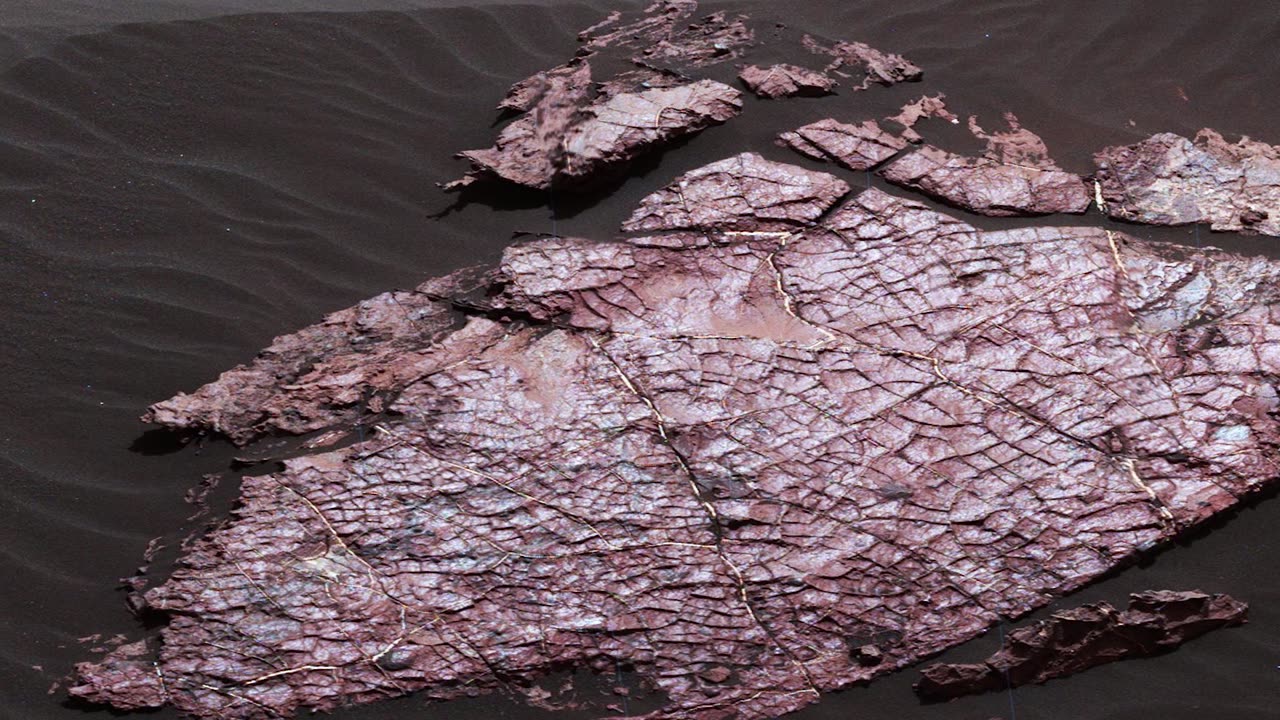Premium Only Content

Mars : A Guide to Gale Crater
August 02, 2017
The Curiosity rover has taught us a lot about the history of Mars and its potential to support life. Take a tour of its landing site, Gale Crater.
TRANSCRIPT
In 2012, NASA’s Curiosity Rover went to Mars to explore Gale Crater, a large impact basin with a massive, layered mountain in the middle. How did this strange landscape come to be? And what can its history teach us about the potential for life on Mars? After several years of exploration, here’s what we think could have happened.
Around 3.7 billion years ago, a large meteor impact blasts out the initial crater, cracking the rock below and leaving a central peak as the surface rebounds. It’s a wetter time in Mars’ history. Groundwater seeps into the new crater, while rivers fed by rain or melting snow also flow in, forming a large lake – and carrying in gravel, sand and silt.
This material keeps building up over millions of years. And as each layer cements into rock, it records a snapshot of the environment that shaped it. In time, the gradual drying of Mars shuts off the rivers. But sediment keeps piling up as sand and dust blow into the crater, deeply burying the deposits laid down in water.
Meanwhile, groundwater remains deep below the dusty surface. At some point, winds that once carried sediment in begin scouring it back out. In areas closer to the crater rim, these winds dig all the way down into the ancient lake deposits. And as the heavy weight above is lifted, these layers crack, which helps groundwater flow through and alter them again before they dry out.
By about 3 billion years ago, we’re left with the basic form we see today. It’s in this version of Gale Crater that Curiosity has helped piece together the story: Sediment patterns show a lot of water was present, continually, over many millions of years – both as persistent groundwater, and a long-standing lake (with occasional dry spells).
Mineral and chemical readings show that water from both the lake and subsurface was friendly for potential microbes. Drill samples from the lakebed show key elements, organic molecules, nutrients and energy sources that microbes could have used. Water flowing through underground fractures could have supported life even in deeply buried rocks. And the composition of some layers makes them good for preserving potential signs of past life.
Taken together, the evidence points to Gale Crater (and Mars in general) as a place where life — if it ever arose — might have survived for some time.
With our primary mission fulfilled, we continue exploring: uncovering the history of Mars, and learning more about how and where future missions can search for the signatures that ancient life may have left behind.
-
 43:16
43:16
Mike Rowe
4 days agoHe Manages Billions WITHOUT A College Degree?! | David Bahnsen #431 | The Way I Heard It
48.4K14 -
 15:51
15:51
DeVory Darkins
1 day ago $15.21 earnedDemocrats suffer HUGE BLOW in court as contempt order paused
43.7K114 -
 15:53
15:53
The Connect: With Johnny Mitchell
14 hours ago $8.87 earnedThe Truth About Ross Ulbricht & The Silk Road: How One Man Became The Internet's BIGGEST Drug Dealer
46.1K10 -
 22:53
22:53
The Brett Cooper Show
2 days ago $10.09 earnedThe Rise of Fake Gurus & Online Cults | Episode 23
49.4K29 -
 14:59:18
14:59:18
Total Horse Channel
18 hours agoWinnemucca Spring Spectacular Cow Horse Show and Derby - Saturday
51.4K5 -
 LIVE
LIVE
After Work Gaming
7 hours ago $1.52 earned“🍺 SOJU SATURDAY “🍺 THE FINALS SEASON 6
158 watching -
 19:01
19:01
Russell Brand
13 hours agoTheo Von Just SHOCKED EVERYBODY With His Take on Trump Tariffs
100K111 -
 14:22
14:22
Tundra Tactical
8 hours ago $5.47 earnedTRUMP DOJ Decides CZ Scorpion Is A Decepticon.
47.2K15 -
 4:53:37
4:53:37
Culturama Podcast
6 hours ago $4.52 earnedEaster Special! Hollow Knight Stream!
39K4 -
 1:04:29
1:04:29
Sarah Westall
9 hours agoThe Philippines and Massive Stores of Gold for all the People of the World w/ Joseph Allain
60.9K44